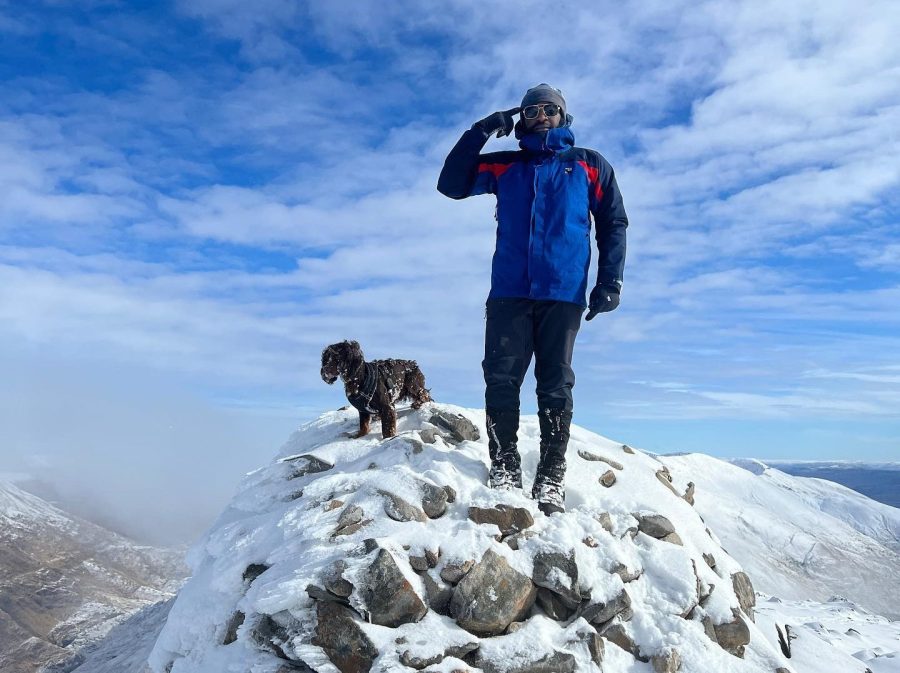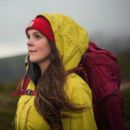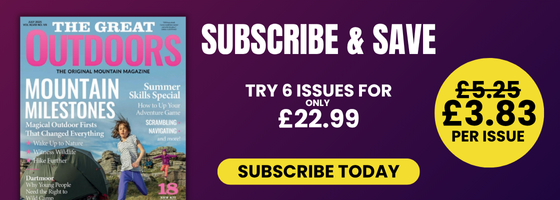Main image: Sgùrr na Ciste Duibhe | Credit: David Solomon
David Solomon’s early long-distance walks in Lagos were not for leisure but rather “because I couldn’t afford transport fares,” he tells The Great Outdoors. He now thinks of those walks as “hunger hikes”. When David moved to Scotland for study at the University of Aberdeen, he would pull over in laybys to take photos of mountains. But a first foray into the landscape on foot – a Loch Muick group trip – didn’t leave much of an impression.
So, how did David – an IT manager living in Inverness – come to summit every Munro in Scotland? As with many of life’s peaks, they came after “intense struggle” mentally. As the pandemic hit, David lost his sister and his relationship broke down. Recalling a walk up Ben Lomond the year prior, he craved that euphoria. He followed his instinct and felt “the dark clouds lift” as he danced his way down Ben Nevis. David made a decision: If one mountain could have that effect, he’d climb them all. He bagged 100 Munros, largely solo to “clear [his] head” in that lockdown year.
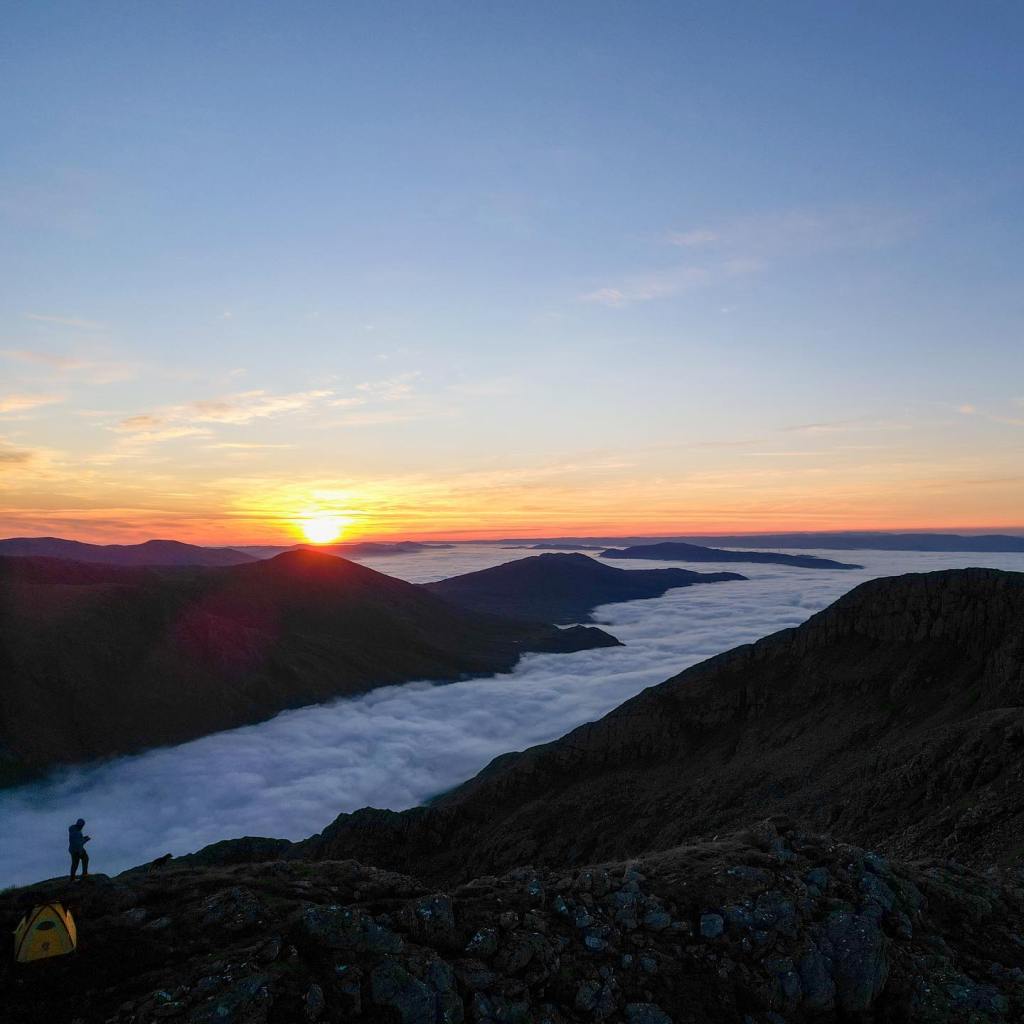
Camping above the clouds. Credit: David Solomon
Last August, he completed; one of the first Black men to do so in history as far as records show. Now bagging Corbetts and Furths, aiming for a Full House after meeting Anne Butler, Alf Barnard, Alan Rowan and Dave Chapman through the Munro Society, he tells us why he believes Munro bagging should be preserved for generations to come as an antidote to mountaineering that only seeks the picture-perfect peaks and paid partnerships.
TGO: Can you recall your most formative early experience outdoors walking in nature and how it impacted you?
David: My most formative early experiences with the outdoors didn’t involve walking in nature. Instead, they were mostly about cycling as a kid. As I grew older, walking long distances in Lagos wasn’t for leisure, It was because I couldn’t afford transport fares. I think of those now as “hunger hikes.” Even after moving to Scotland, I didn’t immediately develop an interest in walking in nature.
I remember during my first year at the University of Aberdeen, we went on a field trip to walk around Loch Muick as part of a Sixth-Century course called Natural World. Looking back, I’ve often thought that experience should have impacted my current interests, but I don’t think it did. I have always admired beautiful scenery, though, and would often stop at laybys to take pictures of mountains.
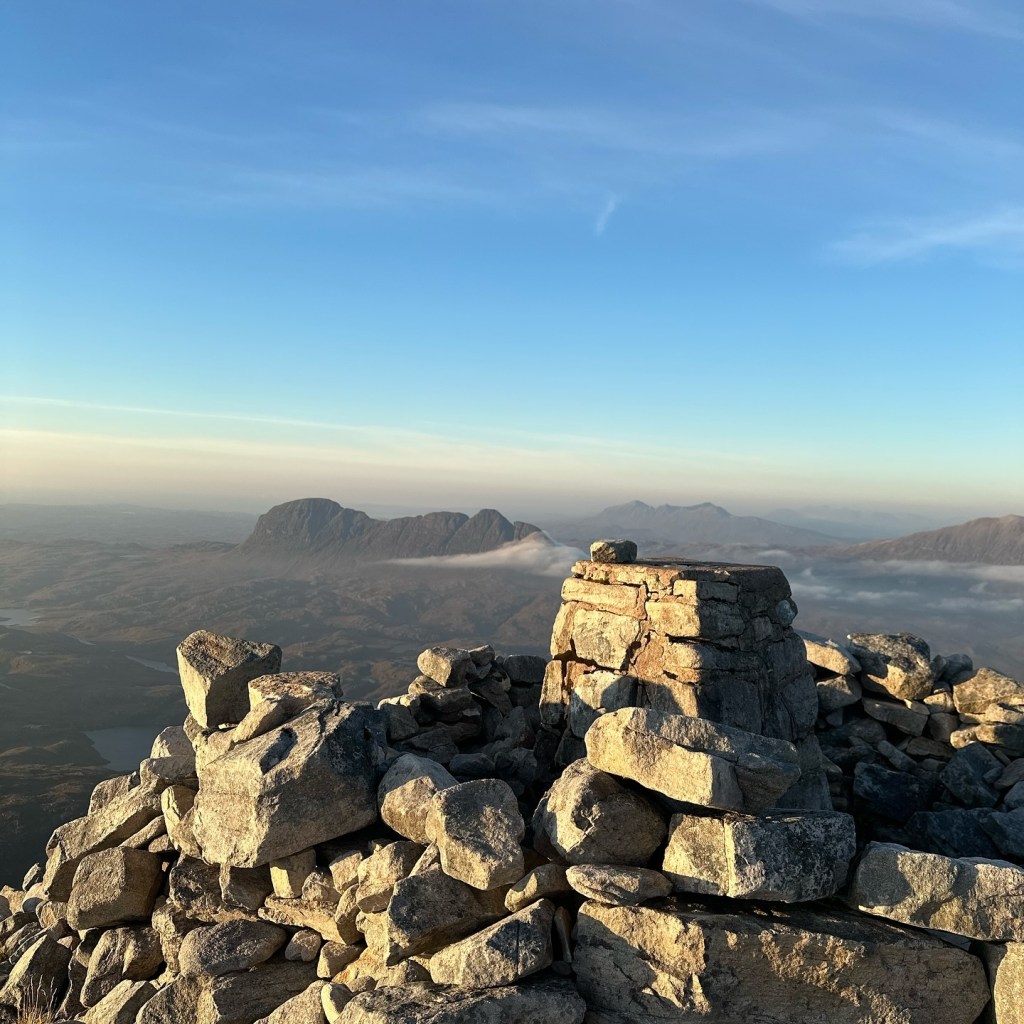
Cul Mor. Credit: David Solomon
TGO: What does your ideal day outdoors in the mountains look like now?
Since most of my hikes are in Scotland, my day in the mountains often depend on the weather we get. However, to answer your question, I’d say my ideal day in the mountains would start early, probably just as the sun begins to rise. This would often involve exploring mountains I haven’t hiked before.
And, of course, an ideal day in the mountains wouldn’t be complete without roaming the hills with my dog JJ. I have said it before, you will never understand the joy of roaming the hills with your dog unless you try it.
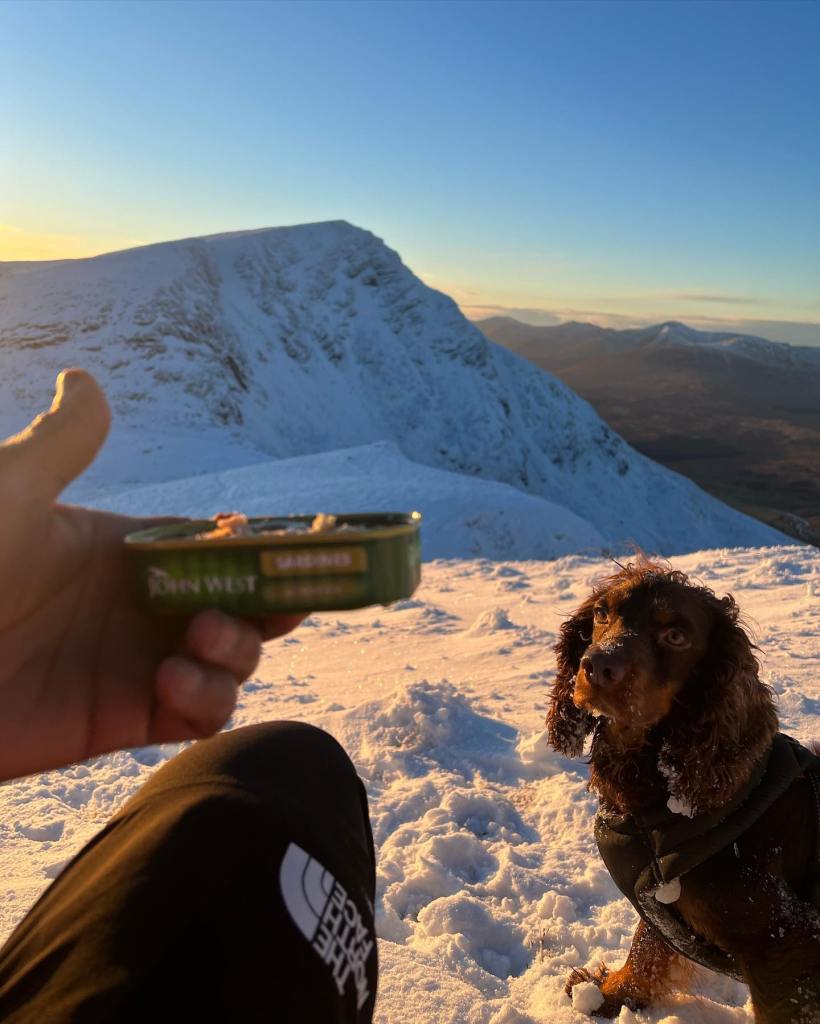
Sardines and JJ on Beinn Achaladair. Credit: David Solomon
TGO: Do you enjoy showing the next generation the way into the hills or do you value time alone in the hills – or perhaps a bit of both!?
David: I enjoy a bit of both! I don’t mind whether I hike with friends or alone, because even with friends, I still manage to carve out a bit of “me time.”
One of my most memorable days during my Munro bagging journey was when my daughter bagged her first Munro. It was a beautiful Sunday afternoon in November 2020, and we had such a great time hiking Schiehallion. There’s a special kind of joy in taking her along to bag a Munro with me; however, she has a mind of her own, just like her dad, and prefers mountain biking to hiking up mountains.
At the same time, I also cherish my solo time in the hills. Solitude is where I find balance and a deeper connection with myself, it’s when I can hear my own thoughts and clear my head. I also enjoy the freedom of not having to wait for anyone when I go solo. Honestly, we wouldn’t be having this conversation if I had waited for friends to hike up my first Munro.
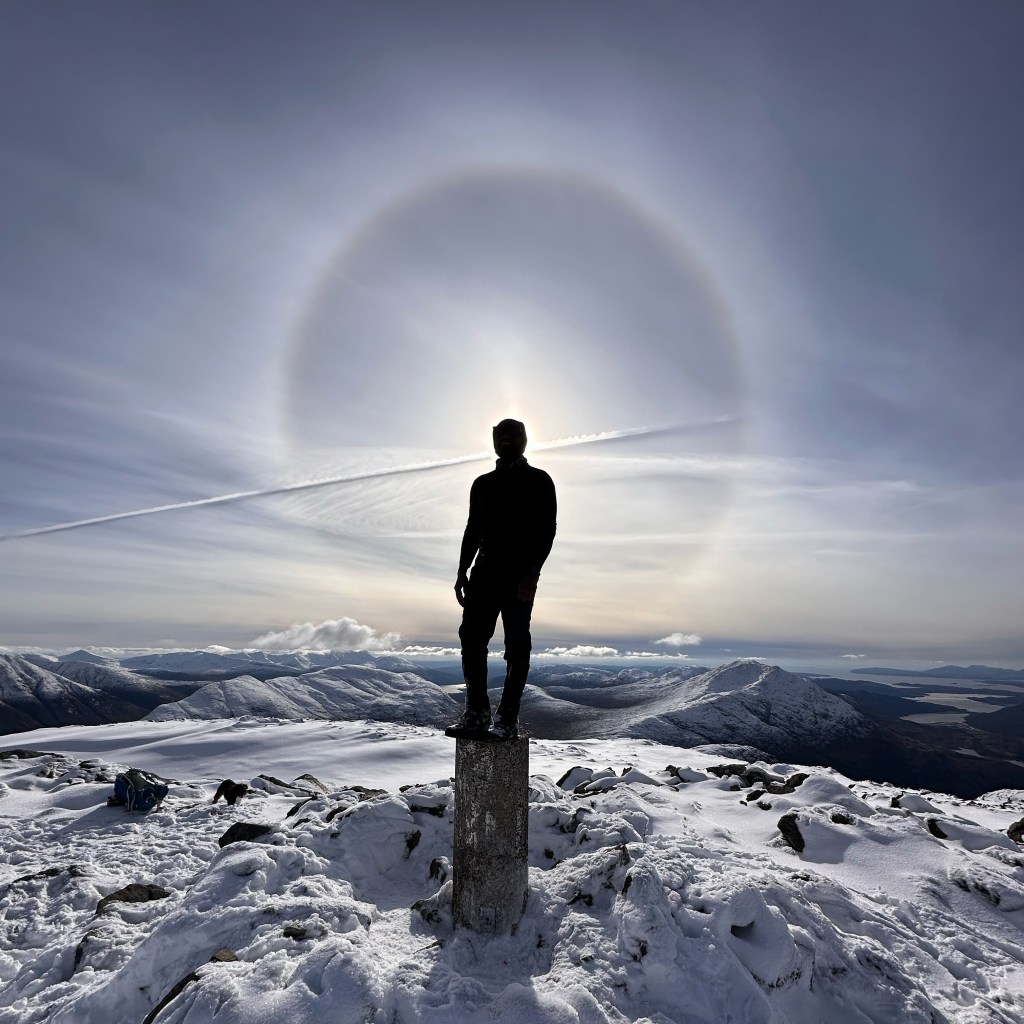
A fogbow on Beinn Fhionnlaidh, Munro 265. Credit: David Solomon
TGO: Why did you to begin the challenge of ‘bagging’ all the Munros?
David: I decided I wanted to bag all the Munros in Scotland during a very challenging time in my life. At the start of the pandemic in 2020, I lost my sister, and during lockdown, the relationship I was in ended. On top of that, I was studying for my Master’s and had to deal with final exams. It was a period of intense mental health struggle.
During all these, I just wanted to climb a mountain. I’d hiked my first Munro, Ben Lomond, in November 2019 and remembered how it made me feel. So, when restrictions were lifted a bit, I set out to climb the highest one in the country, Ben Nevis. The feeling on Ben Nevis was euphoric. I even started dancing on the way down. It was as if the dark clouds hanging over me had lifted. I felt like my happy self again and decided, right then and there, that if one mountain could have that effect, I would climb them all.
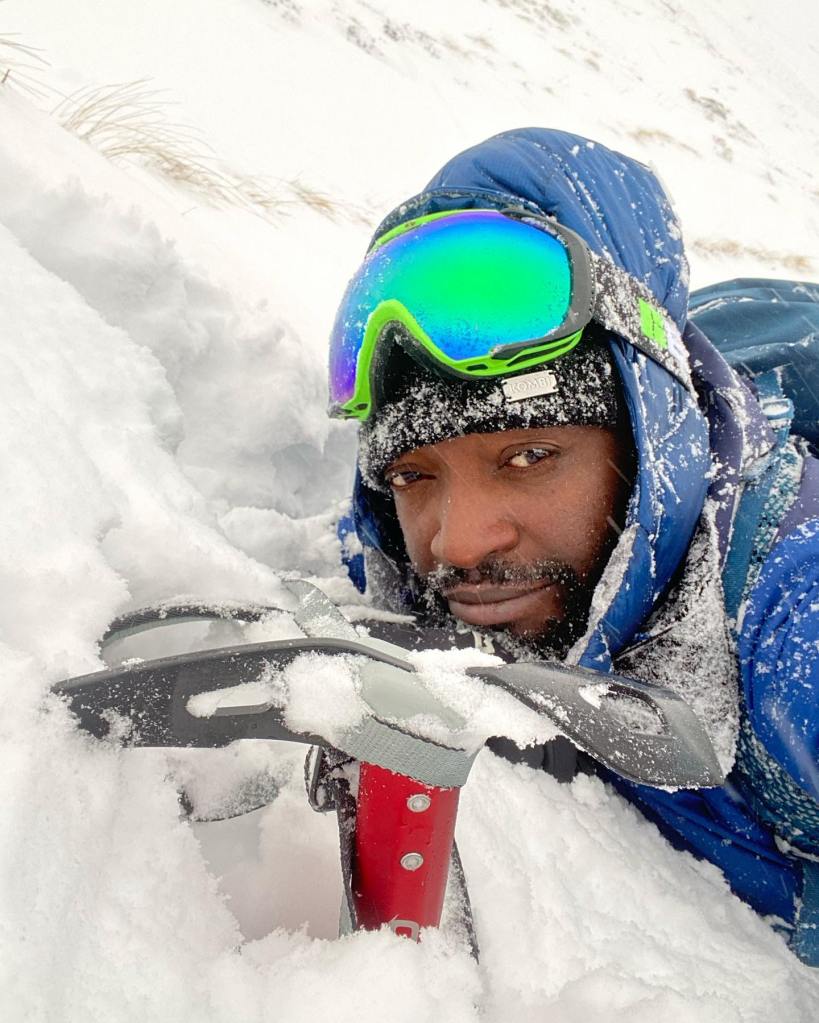
Sròn a’ Choire Ghairbh, David’s 40th Munro in a year. Credit: David Solomon
TGO: And what kept you motivated to keep going and compleate in just a few short years when it takes others a lifetime?
David: My motivation came from the feeling of knowing that every Munro I bagged was another step closer to achieving a goal that had once seemed unattainable during a challenging period in my life. I bagged 100 Munros in my first full year, largely because there were fewer activities available during lockdown, and I was fortunate to live in the Highlands, where it was legal at the time to roam within your local council area.
Another source of motivation came when I learned from the Scottish Mountaineering Club (SMC) secretary that I might be the first Black man to summit all the Munros in Scotland. I felt like I was carrying the weight of an entire culture on my shoulders, so we could proudly say one of us had done it. However, we now know that the legendary Charlie Ramsay completed the Munros back in 1991.
[Editor’s note: Both David and TGO contacted the Scottish Mountaineering Club to verify the history of Black Munroists. The SMC only records ‘compleations’ registered by an individual alongside their name and year of ‘compleation’ with the option to submit a photograph. Thus, the records may not reflect all successful ‘compleations’ of the Munros.]
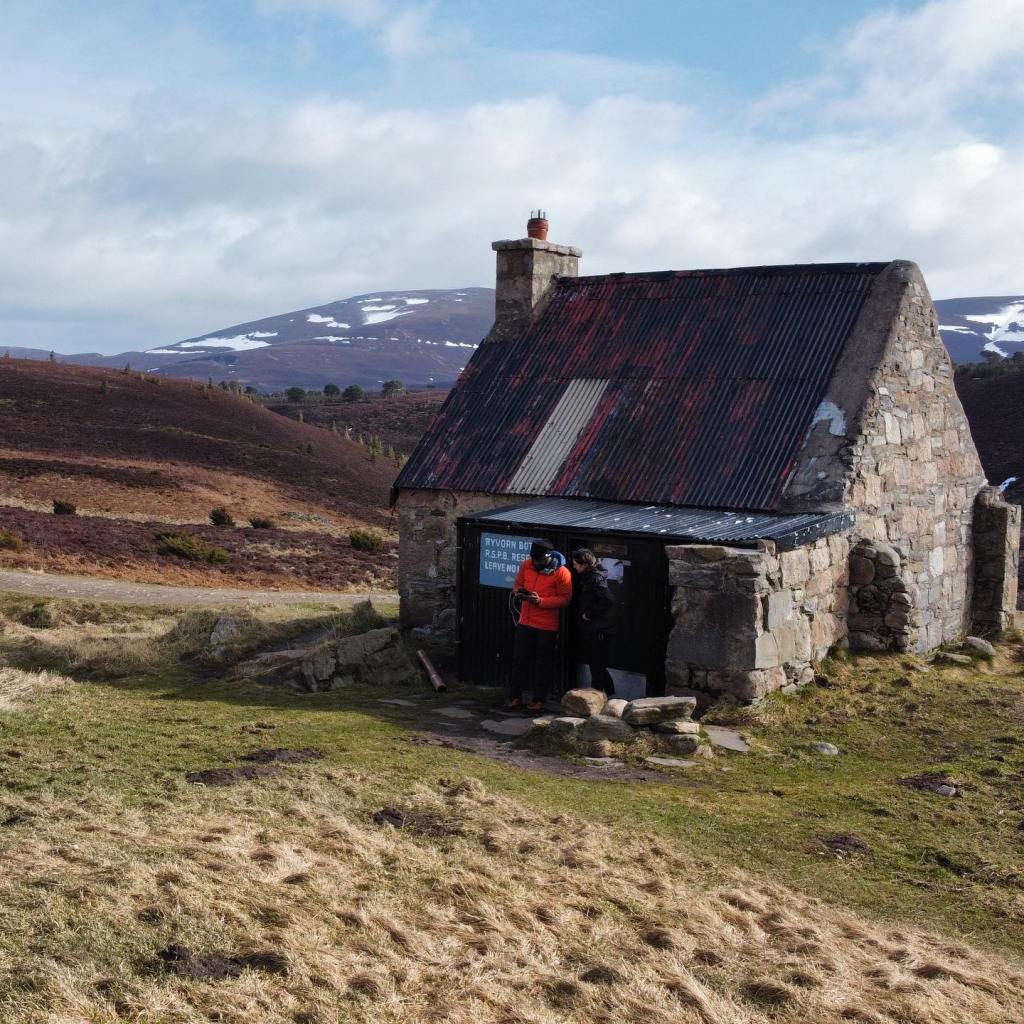
Meall a’ Bhuachaille via the Ryvoan bothy. Credit: David Solomon
TGO: Can you describe the feeling of compleating that day in August amongst friends and family?
David: It felt amazing. I completed the journey on August 10th, surrounded by family and friends, and it truly felt like the pinnacle of a long, deeply personal journey. I was hit with an overwhelming mix of emotions, relief, pride, and joy. Although we had the typical Scottish weather of high winds and rain, it wasn’t just about that one Munro for me. It was about the 281 other Munros, the long drives, the sleepless nights, the laughs the tears, the people I met along the way, the days I camped on a mountain, the nights I slept in my car, and the times I’d stop at a layby for a power nap after a long day in the hills.
It was about where I was mentally when I decided to start the challenge and where I stood now, surrounded by the people who had shared those moments with me. There were cheers, hugs, and smiles all around, even as we braved 35-40 mph winds and rain. It felt like more than just my accomplishment; it was a shared celebration. It’s a moment I will carry with me forever.
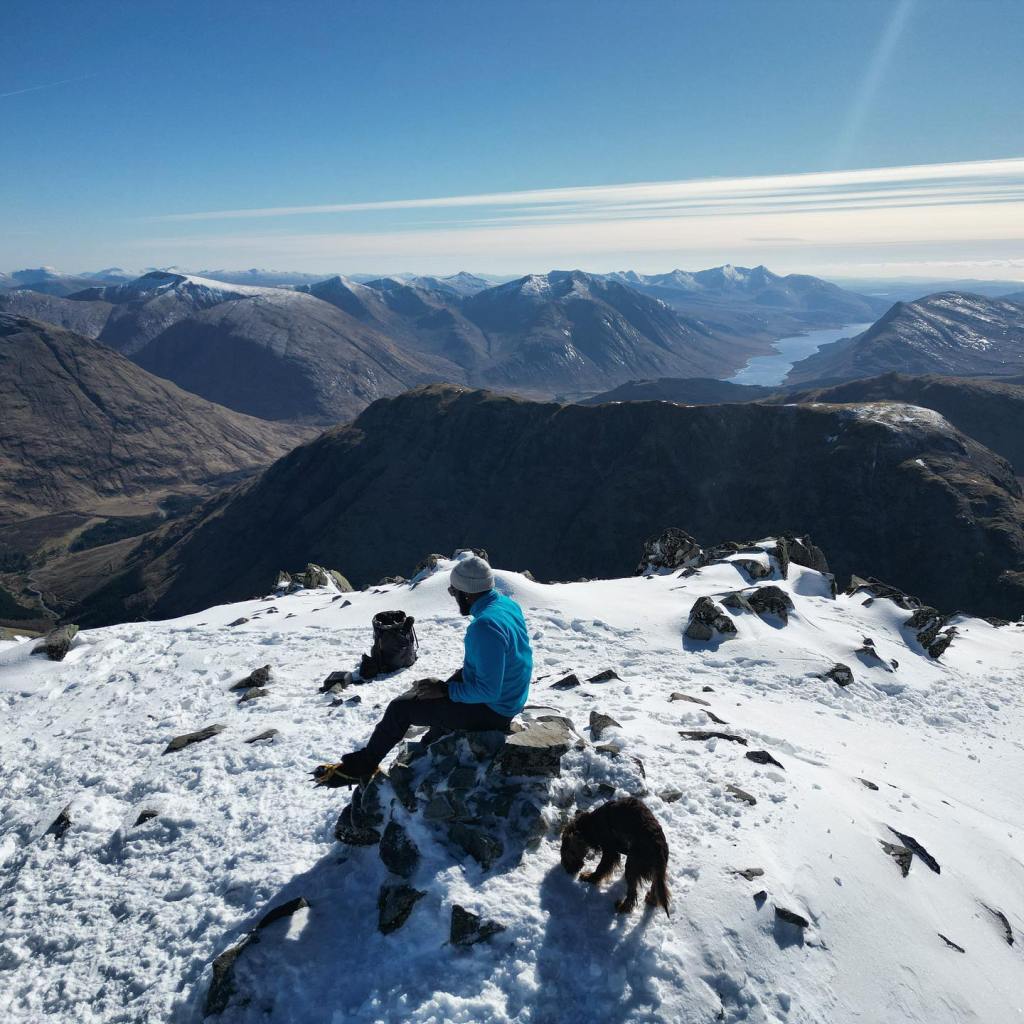
Bidean nam Bian. Credit: David Solomon
TGO: Do you have any highlights or pitfalls of your Munro journey you’d like to share?
David: A major highlight of my Munro journey was from June 29–30, 2021, when I hiked the Mullardoch 12 round with my dog, JJ. Loch Mullardoch lies in a remote and wild area, surrounded by twelve Munro peaks, including Carn Eighe, the highest summit northwest of the Great Glen. Together, these peaks form an epic circular route for hillwalking. Tackling all 12 Munros means covering approximately 70 kilometers with about 4,000 meters of elevation gain. Looking back, I feel incredibly proud that I managed such a long and challenging route, wild camping in the mountains along the way.
As for pitfalls, it’s worth mentioning the non-fatal slips and falls on wet grass, as well as the tough but sensible decisions I’ve had to make to turn back on Munros due to bad weather. However, there’s no better feeling than returning on a better day to finally summit a Munro you once had to turn back from.
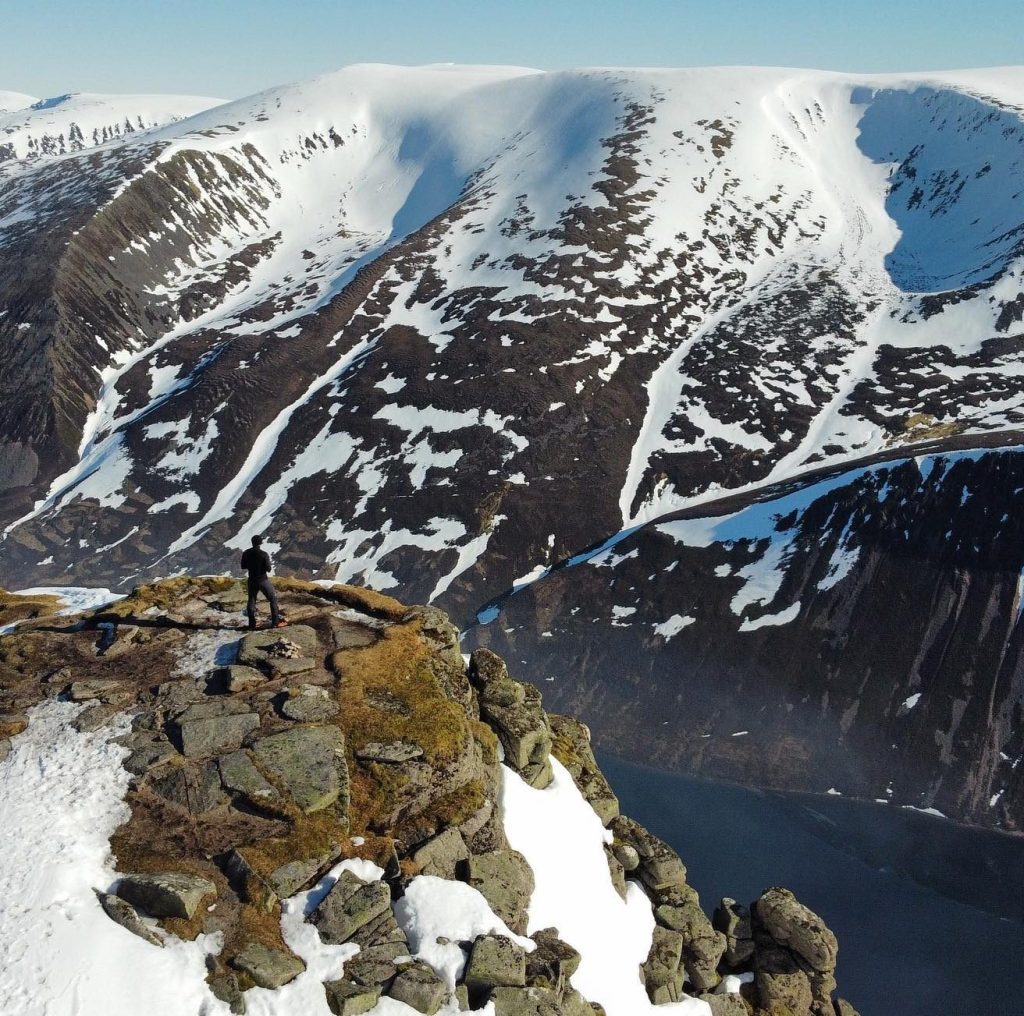
Braeriach from Sgor Gaoith. Credit: David Solomon
TGO: Anecdotally, we know racism exists in our high places, as it does everywhere. As a member of the Global Majority, can you describe your own personal experience in the Scottish mountains?
David: I have not personally experienced racism in the Scottish mountains. However, I recognise that this might not be the case for everyone. One incident that stands out in my mind occurred in the summer of 2021 when a far-right group displayed a racist banner on Ben Nevis. Coincidentally, I was out bagging the Grey Corries, not far from Ben Nevis on the same day. What impressed me most was the reaction from across Scottish society. Politicians, anti-racism campaigners, environmentalists, and mountain rescue experts were united in their condemnation of the act. I also read reports that climbers booed the group after they unveiled their banner. This collective rejection of racism was heartening and showed the power of community in standing against hatred.
The racism I have personally encountered has been online, where individuals hide behind their keyboards to post hateful and racist comments on some of my posts. While easier to dismiss, these interactions serve as a reminder that racism exists everywhere, even in outdoor spaces meant to bring us together. No matter how much we might try to ignore it, racism is a reality. But the more we talk about it, the more awareness we create. Conversations like these are vital in educating the minority of ignorant individuals and groups
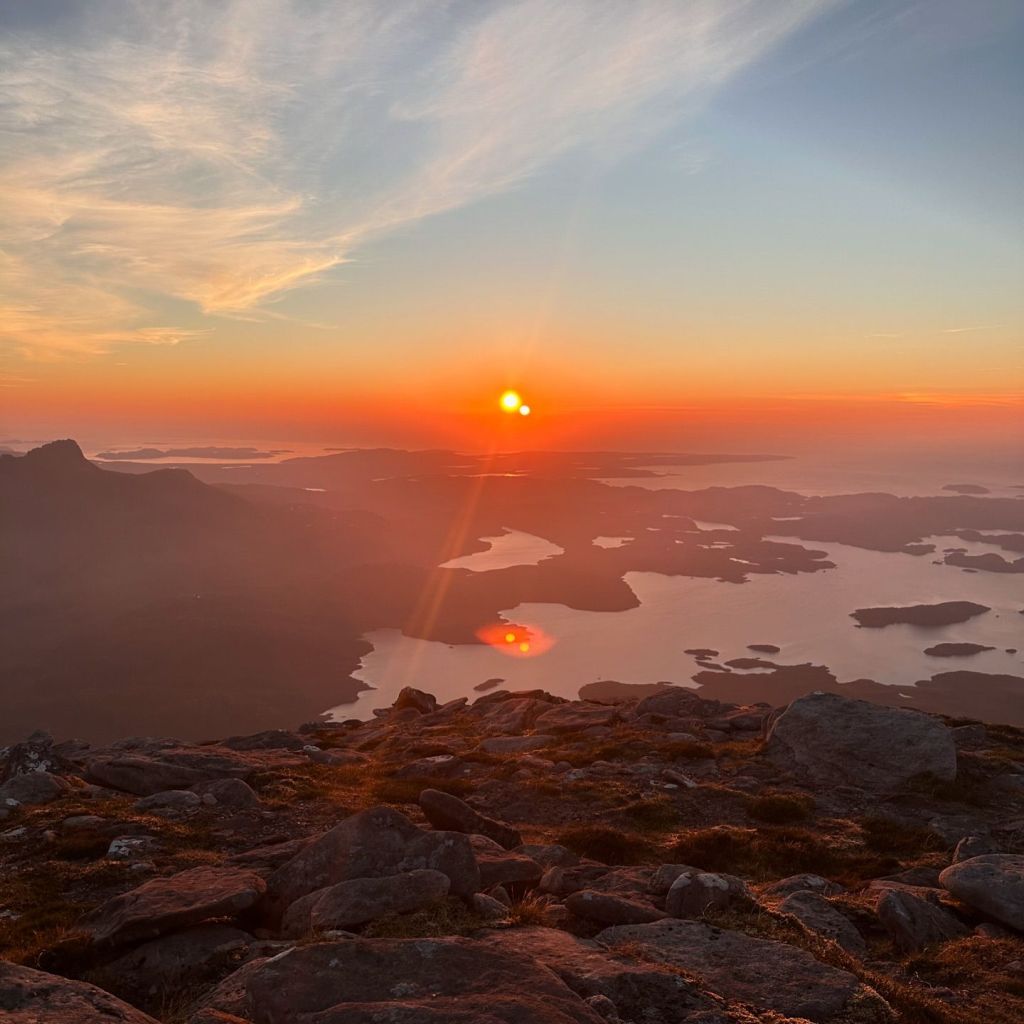
Cul Mor sunset. Credit: David Solomon
TGO: How does it feel to be one of the first Black men to summit all the Munros?
David: Being one of the first Black men to summit all the Munros is an incredibly humbling and rewarding experience. It feels like more than just a personal achievement, it is important to reflect on the importance of representation in outdoor spaces. When I began this journey, my focus was on challenging myself physically and mentally. However, as time went on, I realized that my presence in these spaces also carried a message: that the outdoors is for everyone, regardless of background, race, or identity.
I hope this inspires others, particularly from underrepresented communities, to embrace the joy and freedom of outdoor adventures. Bagging all the Munros has not only helped me connect with Scotland in a unique way but also reinforced the importance of diversity in spaces where it is often lacking. It’s a privilege to share this journey and demonstrate that we all belong in nature. Eventually, my Munro round wasn’t just about bagging them all, it was also about creating a path that others might feel empowered to follow.
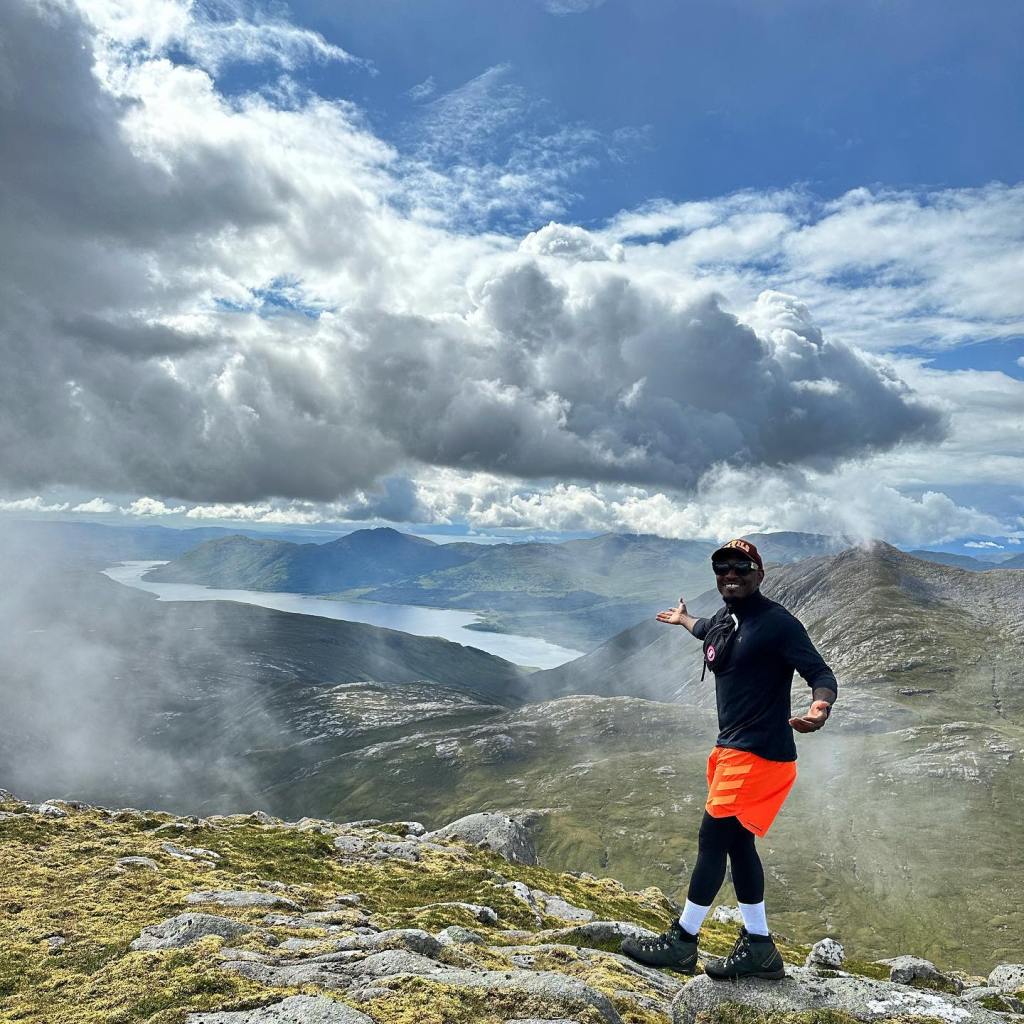
Beinn nan Aighenan. Credit: David Solomon
TGO: And why is it important to you to share the achievement online – whilst making the clear distinction that you are not an influencer?
David: Sharing my achievement online is important to me because it’s about inspiration, representation, and raising awareness. The message I’ve consistently tried to convey is, “Hey, look at me, life happened, but hiking helped.” As a Black man in a space where people who look like me are often underrepresented, I feel a sense of responsibility to share my journey. My hope is to encourage others to step out of their comfort zones, explore the outdoors, and experience the many benefits that nature has to offer. It’s about breaking stereotypes and showing that the mountains and all outdoor spaces are for everyone.
That said, I want to make it clear that I’m not an influencer, because I don’t want to be confined to that label. My goal isn’t to market a lifestyle or chase social media metrics but to share an authentic story of freedom of expression and freedom to do whatever I want to do. For me, the real value lies in the community I’ve been able to build online through sharing my journey. These are genuine connections with real people, not just numbers or an audience to market products to. By sharing my experiences, I’ve been able to foster meaningful conversations about diversity, inclusion, and representation in outdoor spaces.
Ultimately, if my journey inspires even one person, no matter their race or background to take their first step onto a trail or climb a mountain, then sharing it online has been completely worthwhile. It’s a deeply rewarding experience to see how my story can make a difference in someone else’s life.
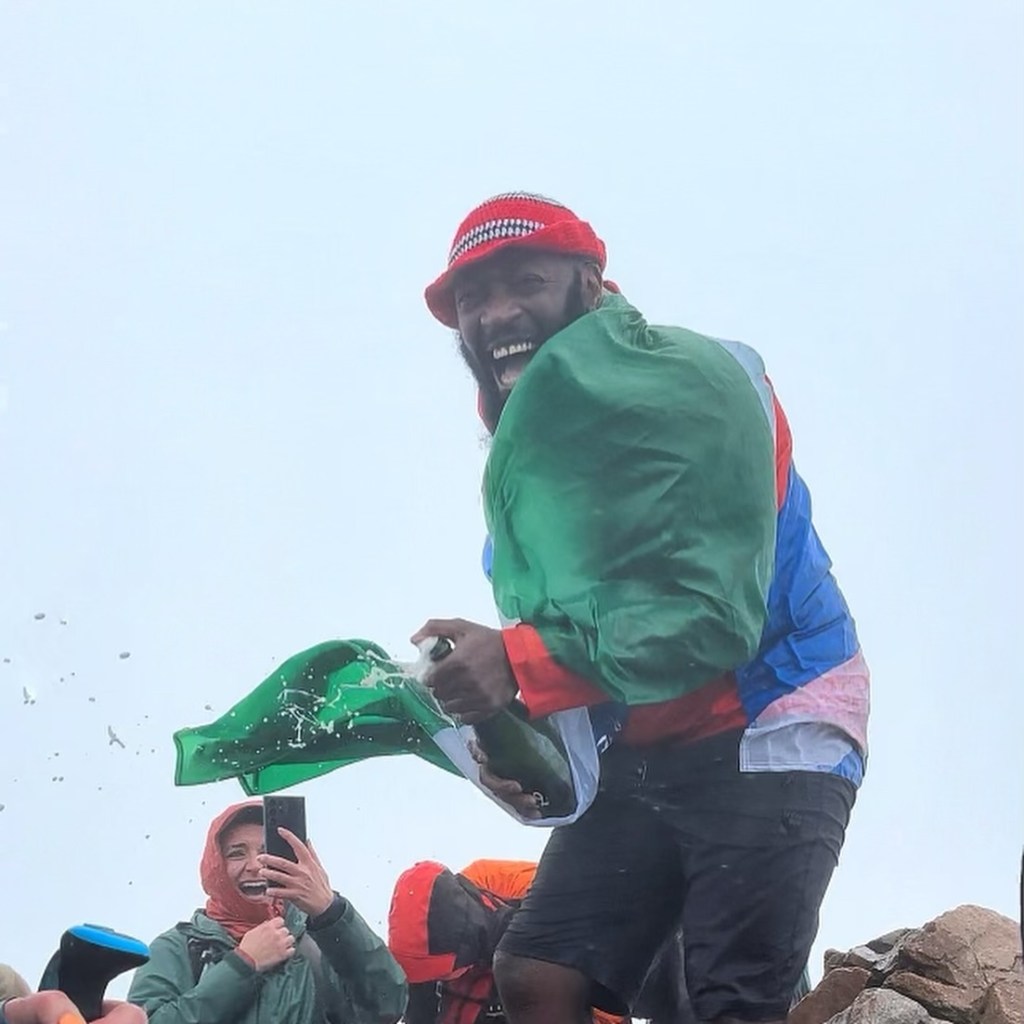
Munro 282, Stob Dearg. Credit David Solomon
TGO: Some criticise bagging for bypassing the ability to savour time outdoors. What are your thoughts?
David: I believe Munro bagging is a legacy that should be preserved for generations to come. The Munros are named after a man who dedicated much of his life to measuring and surveying these hills. Critics of Munro bagging on social media often argue that it’s wrong to travel around Scotland chasing these mountains, yet they selectively choose which hills to commodify for their perfect Instagram videos and pictures.
We all know that the majority of these mountains aren’t “Instagrammable.” What these critics fail to acknowledge is that they’re called Munros because one man took the time to count and measure every single one, not just the picture-perfect ones. If they want to continue commodifying them, perhaps they should simply call them “mountains” instead of Munros.
For me, bagging all the Munros no matter how long it takes is the best way to explore this beautiful country and a truly remarkable achievement. Personally, I feel I wouldn’t have dared to visit many of the incredible places I’ve seen in Scotland if it weren’t for Munro bagging.
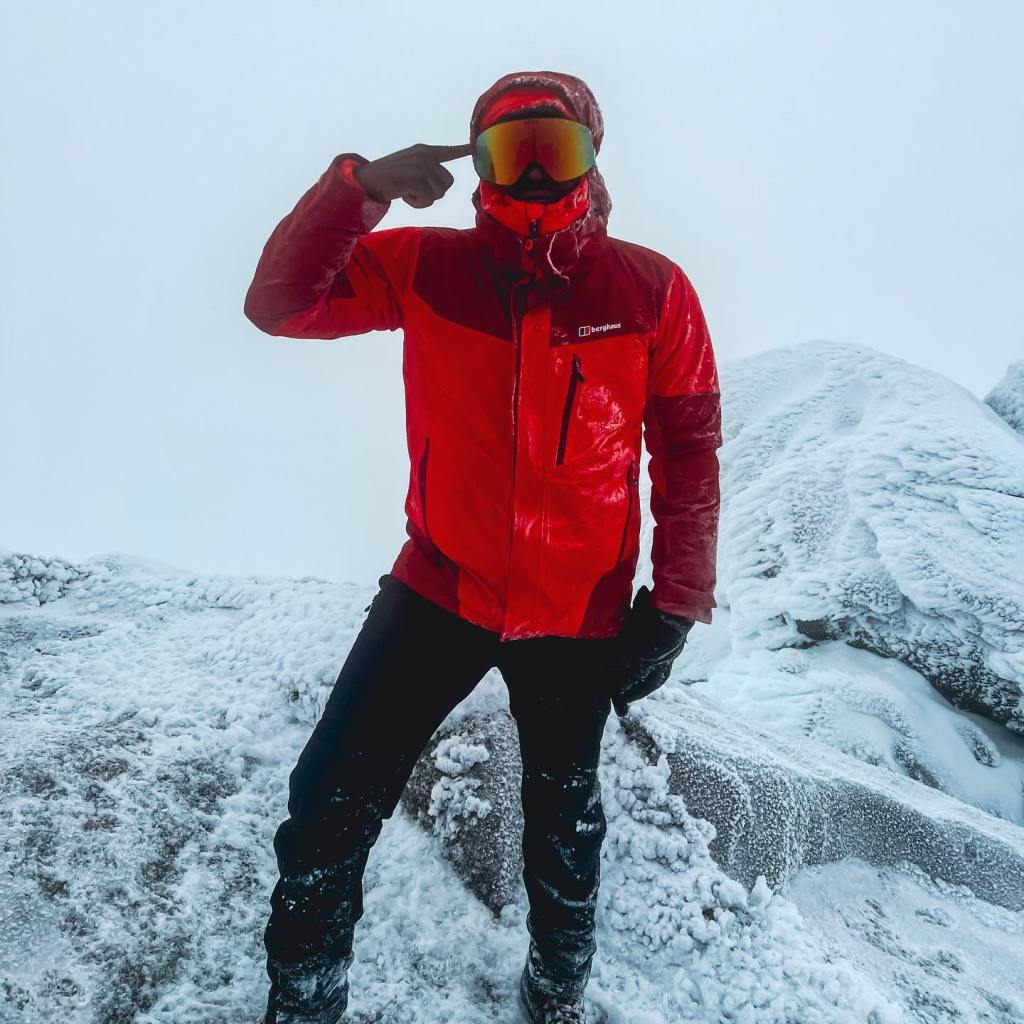
In the Cairngorms. Credit: David Solomon
TGO: Is it important to you personally to demonstrate all aspects of your life online and present as more than a mountaineer?
David: Yes, it’s important to me to show all aspects of my life online and present myself as more than just a mountaineer. Hillwalking is a significant part of who I am for the last 4 years, but it doesn’t define me entirely. I think it’s important to remind people that there’s more to everyone than their hobbies or achievements, and I enjoy sharing my personality, humour, music and everyday life alongside my mountain adventures. It makes the conversation more relatable and human. Life is multifaceted, and I want my online presence to reflect that reality.
When it comes to hiking content creator culture, I respect the work of those who dedicate their platforms to sharing tips, insights, and inspiring others to explore the outdoors. However, I personally don’t see myself as a “content creator” in the traditional sense. My posts are less about curating a brand or aesthetic and more about authentically sharing my experiences and thoughts, whether they’re about mountains, travels, social issues, or moments of humor in life.
For me, the outdoors isn’t just about climbing peaks; it’s about self-discovery, resilience, and connection. That’s why I feel it’s important to stay authentic and balanced in what I share, rather than limiting myself to a narrow focus or falling into the trap of performative posting. Ultimately, my goal is to engage meaningfully with people, inspire inclusivity, and show that there’s room for everyone in the outdoors without losing sight of the other parts of life that make us who we are.

A high camp and quiet. Credit: David Solomon
TGO: Finally, how is your Corbetts bagging mission going and what can we expect from you in the future?
David: My Corbett bagging journey has been off to a slow start, but it’s going well so far. I felt inspired and motivated to aim for a Full House after meeting absolute legends like Anne Butler, Alf Barnard, Alan Rowan, and Dave Chapman at the Munro Society’s annual dinner. It was so refreshing and inspiring to be among a generation of mountaineers and hillwalkers who weren’t driven by paid partnerships, sponsorships, or gifted jackets, but by a pure, unfiltered passion and love for the mountains and hillwalking.
A hillwalker achieves a Full House by completing all the Munros, Munro Tops, Corbetts, Grahams, Donalds, and Furths. So far, only 85 people have officially registered their Full House completion with the Scottish Mountaineering Club (SMC), with Alf Barnard being the 85th person.
Currently, my goal is to complete the Corbetts within the next two years. I also plan to head to Ireland to climb the 13 mountains above 3,000 feet and to England for its six 3,000-foot mountains, which would mean completing the Furths. Having already done the Welsh 3000 Challenge in under 24 hours back in 2022.
You can follow David’s next adventure @ilovethishike.

